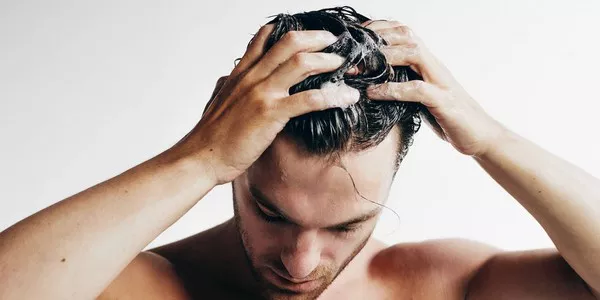Having lustful, healthy locks is a goal many of us aspire to achieve. A crucial aspect of hair care is determining how often to wash your hair. While some people believe in daily shampooing, others prefer a less frequent approach. So, what’s the ideal frequency? In this article, we delve into the topic, debunking common myths and providing expert advice on how often you should wash your hair. Get ready to unlock the secrets of shampooing and discover the perfect routine for your tresses.
Understanding Hair and Scalp Types
The role of hair and scalp types in determining washing frequency
Your hair type, along with your scalp’s condition, plays a significant role in determining how often you should wash your hair. Let’s take a closer look at different hair types and how they influence your shampooing routine:
1.1. Oily Hair and Scalp
Strategies to manage oiliness and maintain freshness
Individuals with oily hair and scalp tend to produce excess sebum, making their hair greasy more quickly. To combat this, washing your hair more frequently—about every other day or every two days—can help maintain a fresh and oil-free appearance.
1.2. Normal Hair and Scalp
Balancing cleanliness and natural oils
For those blessed with normal hair and scalp, washing every two to three days strikes a good balance. Regular cleansing will keep your hair clean without stripping away essential natural oils, maintaining its shine and health.
1.3. Dry Hair and Scalp
Protecting moisture and preventing excessive dryness
Individuals with dry hair and scalp should adopt a gentler approach. Washing your hair every two to three days or even less frequently can help prevent excessive dryness. Moisturizing shampoos and conditions are essential for this hair type, ensuring hydration and preventing ting further damage.
Lifestyle Factors
Adapting your hair care routine to your lifestyle
Determining your hair washing frequency is not solely dependent on your hair type; lifestyle factors also come into play. Consider the following aspects to tailor your routine accordingly:
2.1. Physical Activity
Strategies for active individuals
If you lead an active lifestyle or engage in intense physical activities that make you sweat, more frequent washing may be necessary. Consider washing your hair after each sweaty workout session to remove excess sweat, dirt, and oil.
2.2. Environmental Factors
Protecting your hair from environmental pollutants
Exposure to environmental pollutants like dust, smoke, and chemicals can leave residue on your hair and scalp. In such cases, washing your hair more often, approximately every two to three days, helps maintain its cleanliness and health.
Experimentation and Personalization
Finding your perfect balance
While general guidelines are helpful, everyone’s hair is unique. It’s essential to experiment and personalize your hair care routine to find what works best for you. Pay attention to how your hair feels, looks, and reacts to different washing frequencies, allowing yoursel f the freedom to adapt accordingly.
Additional Hair Care Tips
Complementing your hair care routine for optimal results
In addition to determining the ideal frequency, incorporating these hair care tips into your routine can enhance the health and appearance of your hair:
4.1. Proper Shampooing Techniques
The right way to shampoo
Ensure you’re using the correct shampoo for your hair type and lathering it gently into your scalp. Avoid using hot water, as it can strip away natural oils and cause dryness. Rinse thoroughly to remove all traces of shampoo, and follow up with a conditioner to moisturize and detangle your hair.
4.2. Use of Conditioner
Nourishing and protecting your strands
Conditioning your hair after shampooing is vital to restore moisture and nutrition. Apply conditioner from mid-length to the ends, avoiding the scalp, and leave it on for a few minutes before rinsing. This step helps maintain the health, softness, and manageability of your locks.
4.3. Scalp Massage
Stimulating circulation and promoting hair growth
Incorporate scalp massage into your hair care routine. Gently massaging your scalp with your fingertips increases blood flow, which can stimulate hair growth and improve overall scalp health. It also helps distribute natural oils and removes product buildup.
4.4. Protecting Hair from Heat Styling
Reducing damage from heat tools
Excessive heat styling can cause damage and dryness. Protect your hair by using heat protective sprays or serums before using heat tools such as blow dryers, curling irons, or straighteners. Additionally, try to minimize the frequency of heat styling and opt for heatless hairstyles whenever possible.
conclusion
Determining the optimal frequency for washing your hair requires consideration of various factors, including hair type, scalp condition, lifestyle, and personal preference. While there are general guidelines to follow, it’s crucial to listen to your h air’s needs and adapt accordingly. Experiment with different routines, products, and techniques to find what works best for you. By understanding your hair and implementing effective hair care practices, you can achieve healthy, vibrant locks that turn heads wherever you go.
Remember, finding the right balance is key. So, go ahead and embark on a journey of self-discovery and unveil the secrets to unlock your hair’s true potential.

